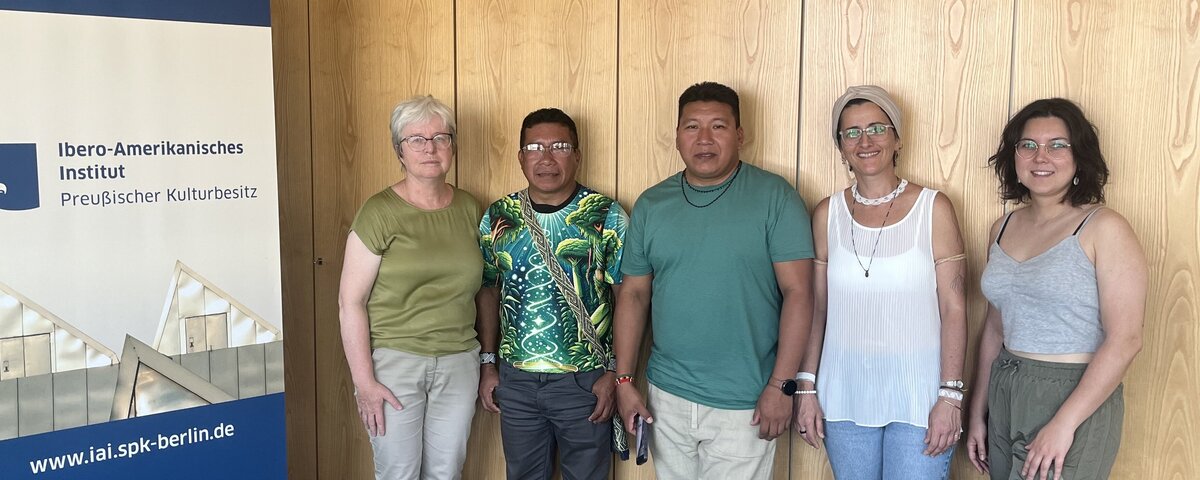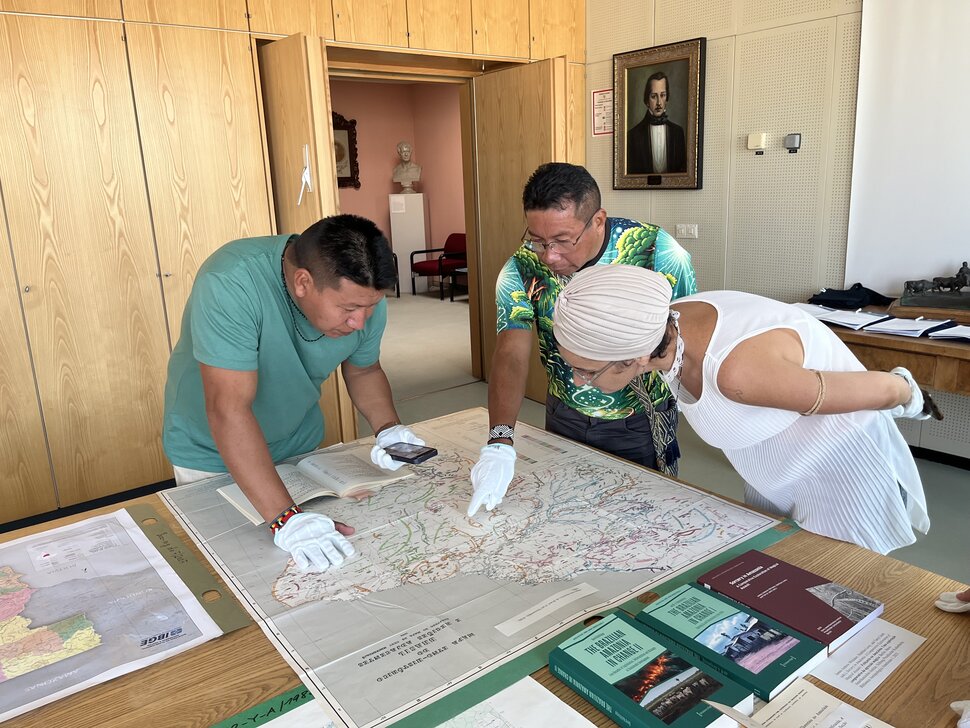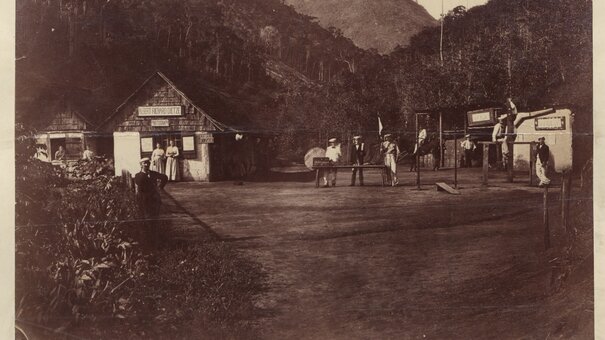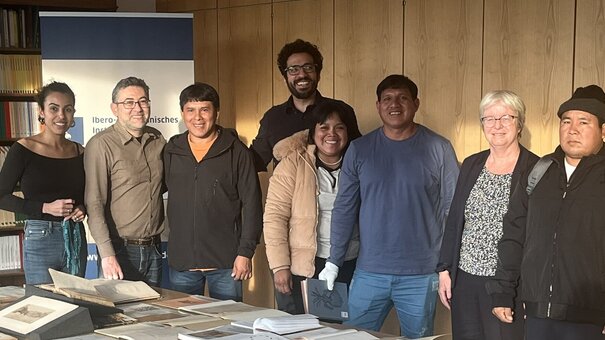On August 15, 2025, Karin Juruna and Txapina Juruna from the Associação Yarikayu visited the Ibero-Amerikanisches Institut (IAI). The Yudja live in the central Brazilian Amazon river basin of the Rio Xingu. The Associação Yarikayu has been committed to the interests of the Yudja in the villages of Tuba Tuba, Awaya, Pakaya, Aribaru, Mupá, Parureda, Maidika, Pequizal, Mazuna, Lãtu, Kamii, Maida and Pak-Samba within the Parque Indígena do Xingu in the Brazilian state of Mato Grosso since 2002 . The village of Tuba Tuba is also home to the Escola Indígena Estadual Central Kamadu, which aims to teach traditional Yudja knowledge alongside conventional school subjects.
Karin Juruna and Txapina Juruna were in Berlin accompanied by the visual artist Cau Silva and the architect and artist Clara Morgenroth. As part of an artistic and educational exchange project with the "LABORSCHULE BERLIN: Education of the Future", they not only visited the IAI, but also the Ethnologisches Museum (external link, opens in a new window) of the Stiftung Preußischer Kulturbesitz (external link, opens in a new window).
The Ibero-Amerikanisches Institut has complementary holdings to the Ethnologisches Museum's Amazonian collections. While the collections of the Ethnologischesl Museum mainly contain objects such as masks, feather ornaments and traditional musical instruments from the region, the IAI holds a variety of materials such as books, magazines, newspaper articles, maps, sound recordings, photographs, slides, field diaries, sketches and drawings. Of particular interest to Karin Juruna and Txapina Juruna were the historical maps and photographs taken during the second Xingu expedition(1887-1888) led by Karl von den Steinen. The diary of Paul Ehrenreich, who took part in this expedition, was also important to them. The diary, including the transcription, and other materials by Paul Ehrenreich are also available in the multilingual digital collections of the Ibero-Amerikanisches Institut (external link, opens in a new window). This also enables access to these ethnographic-historical documents from any location.
As with other visits by representatives of indigenous communities to the IAI, this visit also showed how important it is to open up access to collections in all their diversity and to think beyond the boundaries of museum objects in terms of the processes of recirculation and networking of collections. At the same time, the exchange made it clear how enriching the Yudja 's knowledge is for dealing with the collections. Their knowledge of specific contexts of use, cultural meanings and historical processes of change opens up new perspectives that are important for the future of the collections.




